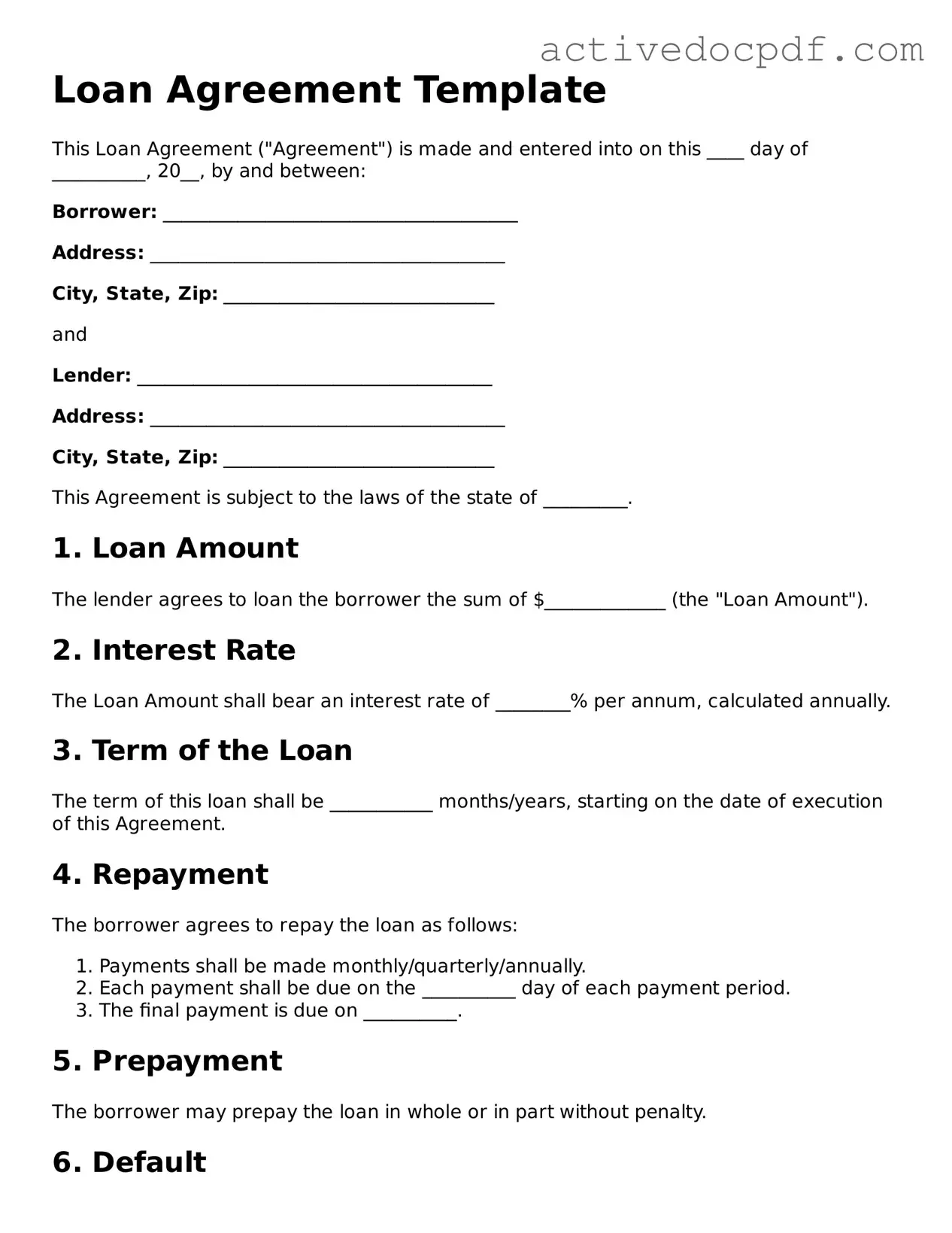A Loan Agreement form is a legal document that outlines the terms and conditions of a loan between a lender and a borrower. It serves to protect both parties by clearly defining the amount borrowed, interest rates, repayment schedule, and any collateral involved. This form is essential for ensuring that both the lender and borrower understand their rights and obligations.
When completing a Loan Agreement form, you typically need to provide the following information:
-
Borrower Information:
Name, address, and contact details of the borrower.
-
Lender Information:
Name, address, and contact details of the lender.
-
Loan Amount:
The total sum being borrowed.
-
Interest Rate:
The percentage charged on the loan amount.
-
Repayment Terms:
Details on how and when the borrower will repay the loan.
-
Collateral:
Any assets pledged to secure the loan, if applicable.
Providing accurate and complete information is crucial for the validity of the agreement.
What happens if I can't repay the loan on time?
If a borrower fails to repay the loan on time, several consequences may occur. The lender may charge late fees, increase the interest rate, or take legal action to recover the owed amount. In some cases, if collateral was provided, the lender has the right to seize the asset. It’s important to communicate with the lender if repayment issues arise, as they may offer alternatives or solutions to avoid negative repercussions.
Can I modify the terms of the Loan Agreement after it has been signed?
Yes, it is possible to modify the terms of a Loan Agreement after it has been signed, but both parties must agree to the changes. This usually involves drafting an amendment to the original agreement, which should be signed by both the lender and borrower. It’s essential to document any changes in writing to maintain clarity and avoid misunderstandings in the future.
Yes, a Loan Agreement form is legally binding, provided it meets certain criteria. Both parties must have the legal capacity to enter into a contract, and the agreement must include clear terms regarding the loan. If all necessary elements are present, the agreement can be enforced in a court of law, which underscores the importance of understanding the terms before signing.
